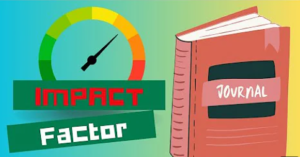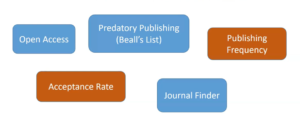Contents
- Intro.
- Choosing the Right Platform: Journal Selection.
- Scope and Audience.
- Type of Journal Publication Service.
- Politics of Journals: Open Access Thrown to Subscription-Based.
- Turnaround Time.
- Understanding the Impact Factor: What It Is and Why It Matters.
- How Impact Factor Is Calculated.
- Importance of the Impact Factor on Students.
- Impact Factor Balance utilizing Realistic Expectations.
- Striking a Balance: The Secret to Publication Success.
- Balancing Factors to Consider in Journal Selection:
- Closing Note.
Intro
It is intimidating to publish research with two key considerations in journal selection and impact factor. Both these factors play an important role in having your hard work reach the right audience and get the recognition it deserves. In this blog, we’ll demystify the process of journal selection and how to understand the impact factor, thus allowing students to make informed decisions that can bring maximum visibility, credibility, and influence to their research with journal publication services.

Choosing the Right Platform: Journal Selection
Journal selection can always have an immediate, great impact on both the success and reach of your research. Choosing the right journal simply helps your work get read by the right people, and possibly highly cited. This lays the foundation for the key sub-leading factors to be followed when choosing a journal.
Scope and Audience
Every academic journal has a scope, whether it be in fields of study or research type. For students, this is one of the most important aspects to go through. You want your research to be placed in a journal that closely relates to your field of study. If one is c, for example, a journal on either environmental science or energy technology is better than one whose subject area is generally science.
One major benefit of publishing in a journal with a focus that aligns with your research is that doing so ensures the right audience for your work, including experts, fellow researchers, and students within your field. Failure to do so blindsides your work by failing to reach the very people who are most likely to read, cite, and engage with your work.
Type of Journal Publication Service
Different journals sometimes appeal to different types of topics. Some are theoretical and dive deep into hypotheses and frameworks, while others address practical, experimental, or applied research. Students evaluate whether their research fits the style of the journal they want to publish in.
As an example, if your study involves experimental data and hands-on results, you don’t want to target journals that deal strictly with theoretical research. Matching the type of research, you have conducted with the usual content published by the journal increases the likelihood of acceptance substantially.
Politics of Journals: Open Access Thrown to Subscription-Based
Another important factor is the journal’s access policy. Some journals publish open access, meaning anyone anywhere can immediately read your research. Open access can very much extend the readership for a piece of work since readers not be barred from access by pay or subscription requirements. However, most open-access journals charge publication fees, which is problematic for students on a tight budget.
On the other hand, subscription-based journals have more established readerships and sometimes be held in higher regard, but access is often limited to institutional or personal access. You’ll need to weigh for yourself whether the possibility of broader access is worth the connected fees or if a subscription-based journal best fits your objectives.
Turnaround Time
For students, and especially those with impending PhD, fellowship, or job applications, timing is everything in waiting to publish. Some journals take several months and even over a year for review processes. If you need to publish on time perhaps to meet an application deadline, the choice of a journal that has a reputation for quick review times can be extremely important. Often many journals give an estimation of review times, therefore, this is something wiser to research beforehand.
Factors to consider:

Understanding the Impact Factor: What It Is and Why It Matters
The impact factor is considered the “reputation score” in journals, mainly because it measures the average number of times articles published in a specific journal publication services have been cited within a particular period, usually two years. While not the only drive in assessing the reputation and prestige of the journal, it provides important proof of the prestigious position a journal holds in the academic community.
How Impact Factor Is Calculated
The impact factor is determined by taking a ratio of the number of citations a journal has given in a single year divided by an average of the number of articles published in that same journal during the previous two years. For example, let us say Journal A received 400 citations in 2023 based on articles it published in 2021 and 2022, and assume that Journal A has published no more than 100 articles within those years; the impact factor for the paper would be 4 in the year 2023.
It is a metric that gives evidence of how frequently an average article, published in that journal has appeared, hence giving the visibility and importance of a journal during its indexing year.
Importance of the Impact Factor on Students
Generally speaking, journal paper publication service tends to aid students by the fact that:
- Higher Visibility: The problems with higher impact factors are more widely read; therefore, your research is bound to be viewed by a larger audience. Chances of Citations: This, in turn, increases the chances of your work being cited, which can further help in raising your academic profile.
- Credibility and recognition: Most high-impact factor journals have a ring of prestige to the name. Publishing your work in these journals is viewed as a good reflection of quality and relevance, therefore giving you an added advantage over others in your academic or research career.
- Career Advancement: Publishing in a high-impact journal enhances your resume when it comes to applying for highly competitive scholarships, research grants, or academic positions. A position that can show your research has been accepted by such a reputable and influential journal opens more opportunities that were not previously available to you.
Impact Factor Balance utilizing Realistic Expectation
While publishing in a high-impact journal is desirable, students should also be aware of the potential pitfalls of aiming for the top: journals with higher impact factors tend to have stricter peer review processes, and their rejection rates tend to run higher.
This is the point where one realistically evaluates the quality and scope of his or her work: if the research is groundbreaking, then one can aspire to a high-impact journal; if not, if this work fits into some more niche area or is highly exploratory, then perhaps a mid-tier journal with a slightly lower impact factor is the best place for the work. This nevertheless, carries good visibility and credibility but with a much more manageable review process and acceptance times.
Striking a Balance: The Secret to Publication Success
Often, students face a type of balancing act in journal selection and impact factors. While you want to make as big of an impact as possible and make your research as credible as it can be, that goes in line with pragmatic considerations as issues related to publication timelines, fees involved, and chances of acceptance.
Balancing Factors to Consider in Journal Selection:
- Scope match: Some journals always match your research area.
- Access Policy: Decide whether open access is worth the extra cost for the increased reach.
- Impact Factor: One needs to weigh between the prestige of the journal and the possibility of being accepted. Sometimes it is more efficient, in terms of timing, to be published in a slightly lower-impact journal; this is very valuable in terms of visibility.
- Time to First Decision: When deadlines are fast approaching, the selection revolves around the journals offering quicker review times.
Giving due consideration to each of these factors, students can make strategic publication decisions that heighten the possibility of publication success, build reputation and, at the same time, prepare a groundwork for future opportunities.
Closing Note
The selection of a journal and finding the impact factor of the journal are two major critical steps in the publication process for students. You can ensure the visibility and credibility of your work by making proper choices on matching your research to an appropriate journal, the role of the impact factor, and practical policies about timeline and access.
Publishing in a well-chosen journal publication service increases the chances of other scholars finding and citing your work, adds to your academic profile, and opens future research or career possibilities. Reach out to the selected circles by being well-researched in your choice so that your work reaches not only the academic community but also the audience it rightly deserves. Intro
It is intimidating to publish research with two key considerations in journal selection and impact factor. Both these factors play an important role in having your hard work reach the right audience and get the recognition it deserves. In this blog, we’ll demystify the process of journal selection and how to understand the impact factor, thus allowing students to make informed decisions that can bring maximum visibility, credibility, and influence to their research with journal publication service.





